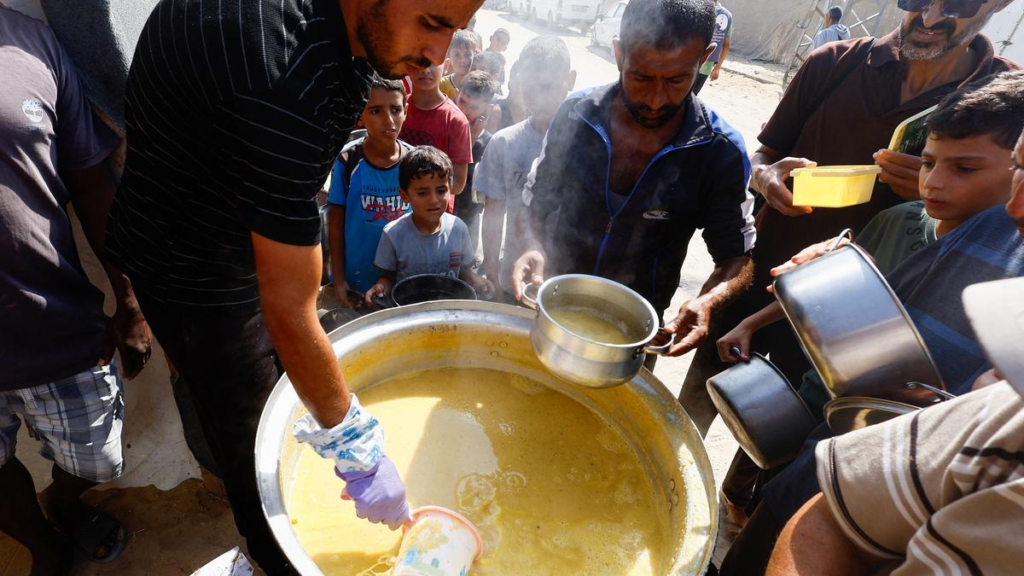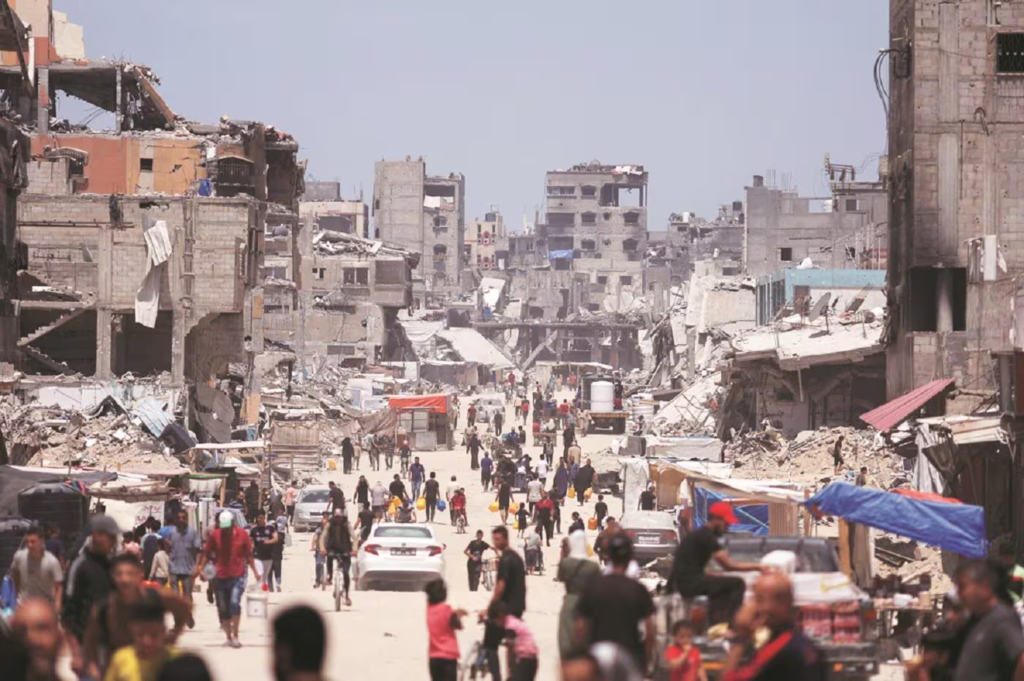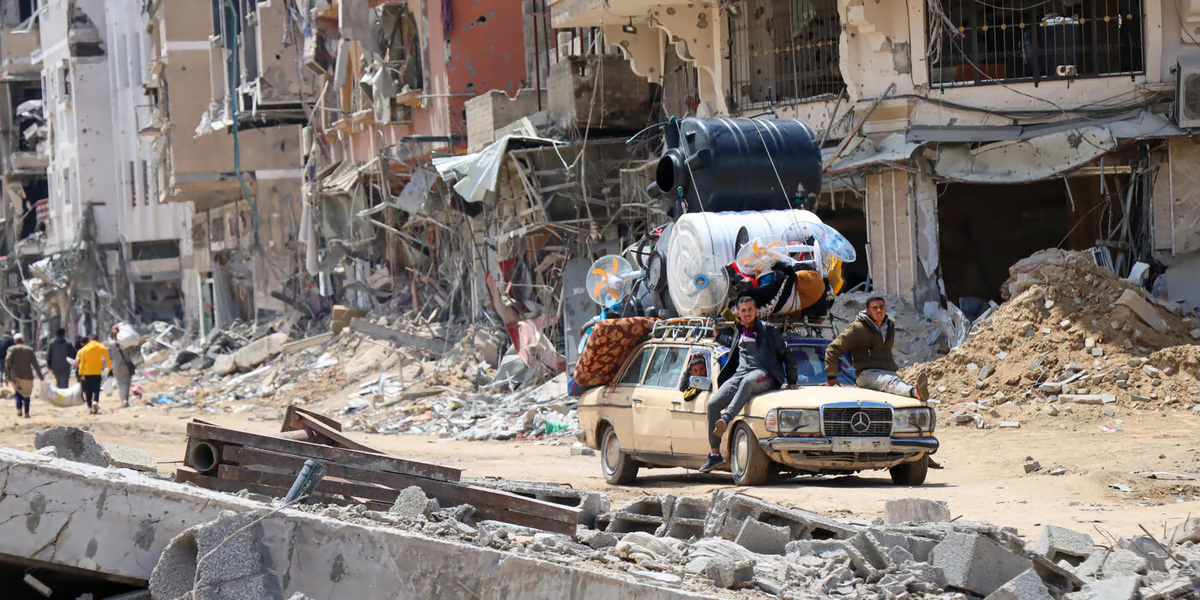Northern Gaza is facing a worsening humanitarian crisis as famine looms large over its population. After more than a year of ongoing conflict between Israel and Hamas, the situation in this region has become increasingly dire, with thousands of people struggling to access food and basic necessities.
Israel’s blockade on food shipments to northern Gaza, combined with continued military operations and severe displacement, has left the area teetering on the brink of a full-scale famine. The Integrated Food Security Phase Classification (IPC) has issued alarming reports on the state of hunger in Gaza, highlighting the immense risk facing over a million people.
A Year of Escalating Conflict
The conflict between Israel and Hamas, which began in October 2023, has now passed its one-year mark, leaving the Gaza Strip in a state of devastation. Over this period, the people of Gaza have faced a relentless onslaught of airstrikes, ground operations, and the destruction of infrastructure.
What initially started as a violent clash between Israel and Hamas has since spiraled into a full-scale humanitarian disaster. Hundreds of thousands of civilians in northern Gaza have been forced to flee their homes due to evacuation orders from the Israeli military.
Read : Pro-Gaza Protest Held at New York Stock Exchange: 206 Arrested
They now live in overcrowded camps and temporary shelters, with limited access to food, clean water, or medical services. In the past few months, the conflict has only intensified. Israel launched another major military offensive in northern Gaza, ordering the evacuation of the region’s inhabitants.
Read : Israel Orders All Civilians to Leave Gaza City as Bombardment Escalates Throughout the Besieged Territory
For nearly two weeks in October 2024, no food was allowed into northern Gaza, a blockade that further exacerbated the growing famine risk. The Israeli government has since allowed limited shipments of food into Gaza, but these deliveries have fallen drastically short of the territory’s needs. According to reports, only 5,800 tons of food have entered Gaza in October, compared to nearly 76,000 tons in September.
Hunger at Crisis Levels
The hunger crisis in northern Gaza is now classified as Phase 3 or higher by the IPC, meaning the majority of the population is experiencing severe food shortages. Nearly 86% of Gaza’s residents—over 1.8 million people—are facing what the IPC defines as “crisis” levels of hunger.
Even more alarming, around 133,000 people are at Phase 5, which the IPC describes as “catastrophic hunger.” Although the number of people facing this extreme level of hunger has decreased from earlier in the war, the situation remains fragile and volatile.

The IPC has repeatedly warned that Gaza is at high risk of famine, particularly as winter approaches. The combination of harsh weather conditions, overcrowded shelters, and a breakdown in humanitarian aid delivery is expected to worsen the crisis in the coming months.
Aid organizations have struggled to get food, water, and medical supplies into Gaza, with many shipments stuck at the border or disrupted by Israeli military operations. The situation has led to widespread suffering, as displaced families scramble for whatever aid they can find.
In makeshift kitchens across central Gaza, women and children line up for hours to receive small portions of thin soup and bread, a stark reminder of the desperation that has taken hold.
International Pressure and the Humanitarian Response
The ongoing crisis in Gaza has prompted international outcry and pressure on Israel to ease its restrictions on food and aid shipments. In recent weeks, the United States has expressed growing concerns over the humanitarian situation in Gaza.
Both U.S. Secretary of State Antony Blinken and Defense Secretary Lloyd Austin have warned Israel that its continued blockade and lack of humanitarian aid could jeopardize American military support. The U.S. has been a significant provider of military aid to Israel since the beginning of the conflict, with nearly $18 billion spent so far on weapons and other support.
Despite these warnings, aid deliveries to Gaza remain insufficient. The U.N. and other humanitarian organizations have reported that the amount of aid entering Gaza is at its lowest level in months, with much of the food stuck at the border or unable to reach the most vulnerable populations in northern Gaza.
Aid groups have also raised concerns over the Israeli government’s actions, particularly the recent military operations and evacuation orders, which have disrupted the delivery of humanitarian assistance.

The situation on the ground has grown more chaotic, with reports of looting, lawlessness, and violence in many areas. This has further hampered aid efforts, leaving countless people without access to food or medical care.
The potential for a “surrender-or-starve” policy, proposed by former Israeli military officials, has added another layer of uncertainty and fear for the people of northern Gaza. The plan would involve cutting off aid to areas where residents do not comply with evacuation orders, effectively labeling anyone who remains in the region as a militant.
While the Israeli government has not officially adopted this policy, its possibility has raised alarm among rights groups, who argue that such a measure would be a clear violation of international law. Humanitarian organizations, including the IPC, have emphasized that continued displacements and the blockade on aid are pushing Gaza closer to a full-scale famine.
A Fragile Future for Northern Gaza
As winter approaches and the conflict in Gaza shows no signs of abating, the risk of famine continues to escalate. Northern Gaza is particularly vulnerable, with its population facing extreme levels of hunger, displacement, and instability.
The blockade on food aid, combined with ongoing military operations, has created a crisis that international organizations fear could spiral out of control. While there have been some efforts to ease the restrictions on humanitarian aid, the situation remains dire, with many aid groups warning that Northern Gaza could soon experience a famine of catastrophic proportions.
The international community has a critical role to play in addressing this crisis. Continued pressure on Israel to allow more aid into Gaza is essential, as is ensuring that humanitarian operations can proceed without interference.

The people of Gaza, particularly those in the northern region, are in desperate need of food, water, and medical care. Without swift and decisive action, the humanitarian situation in Gaza could reach an irreversible tipping point, leaving millions at risk of starvation.
The prospect of famine in Gaza underscores the urgent need for a ceasefire and a diplomatic resolution to the conflict. Until a lasting peace is achieved, the people of Gaza will continue to bear the brunt of the war, trapped in a cycle of violence, hunger, and displacement.
For now, the focus must be on ensuring that humanitarian aid can reach those who need it most and preventing the looming famine that threatens to devastate northern Gaza and its people.
let’s enjoy few years on earth with peace and happiness….✍🏼🙏

